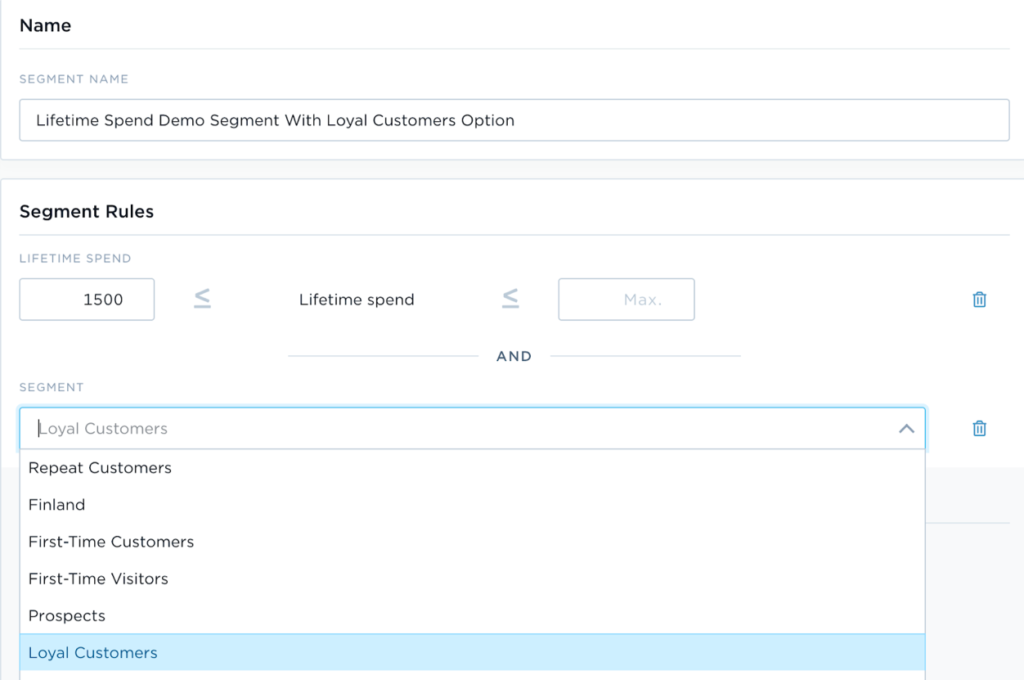What’s New In Nosto: Enhancements to Customer Segmentation Capabilities
As the latest addition to our Segmentation & Insights product offerings, you can now create customer segments based on lifecycle value (such as average order value and lifetime spend) and absolute values (such as product categories your customers have bought).
To briefly recap, our Segmentation and Insights offering enable retailers to better understand customer shopping behavior at a number of levels, map out customer journeys and group those customers based on their buying preferences. The result: a gold mine of valuable knowledge for the retailer and a more relevant shopping experiences for the customer.

In this post, we’ll cover the main enhancements to our customer segmentation capabilities, which include:
- Lifecycle segments, which support the creation of segments based on:
-Average Order Value
-Items Per Order
-Lifetime Spend - Purchase History segments, which support the creation of segments based on:
-ProductIDs (i.e. customers who’ve purchased individual products)
-Product categories
-Brands
-Product tags (our customers typically map color or style attributes to tag fields)

Customer Segments Based on Lifecycle Value
Segmentation based on customer lifecycle enables retailers to group customers based on how often they make a repeat purchase. This is key in identifying which customers are the most loyal to your brand and which ones are likely to lapse (i.e. lose interest or go a significant time without interacting with your products).
When striving to deliver personalized experiences for first-time customers and drive one-time buyers towards becoming loyal shoppers, analyzing repeat purchase patterns has potential to impact the bottom line. However, based on the nature of default lifecycle segments, they don’t incorporate the monetary aspect of the shopping experience – such as average order value or lifetime spend.
To tackle this missing link, we’ve added support to factor Average Order Value, Items Per Order and Lifetime Spend when creating lifecycle segments. Our latest additions allow you to create sub-segments out of attributes like big spenders within the loyal customer group; by nature, these are your VIP customer group, or your crème de la crème (as our French product manager, Romain, calls them).

Additionally, you can segment these big spenders regardless of their stage in the shopping journey. This opens up the possibility to personalize onsite content campaigns for this group, as well as streamline the process of creating custom and lookalike audiences for marketing channels like email and Facebook & Instagram ads.
(For additional best practices to target customers on Facebook and Instagram, our guide to Facebook and Instagram Audiences lays out all the must-know details.)
Customer Segments Based on Purchase History
Another enhancement to our customer segmentation is the ability to create segments based on purchase history. Purchase segments leverage transactional data, which makes them ideal for exact customer targeting. But because they only make use of order data, purchase segments only become available for use after a customer has made a purchase. Existing affinity segments, on the other hand, remove the guesswork by enabling you to target customers based on behavioral signals – for instance, when a returning customer changes their current buying scope (such as shopping a different product category).
While Purchase History segments are more transaction-based, they’re still a valuable asset when there’s a clear and concise need to group customers based on past purchases versus a behavior-based approach.

Purchase History segments are most commonly used in the case of immediate cross-selling to returning customers. Let’s look at an example of returning customers who we know have previously purchased a winter jacket. If a Purchase History segment has been created to target those customers, you can potentially…
- Promote and cross-sell anything other than winter jackets to that customer segment
- Choose a preferred cross-selling range (such as accessories or tops) of the same brand.
While the possibilities for leveraging Purchase History segments are endless, it’s also important to ensure they satisfy your store’s specific use cases. We’re always here to review these use cases to determine if Purchase History segments are a right fit for your personalization goals.
How to Get Started with Segmentation & Insights
For existing users of Segmentation & Insights, creating new segment types is as simple as defining numeric values for lifecycle segment types or product details for Purchase History segments (but if you’re in need of a re-cap, check out our short tutorial which walks you through all the details).
If you’re not using Segmentation & Insights to better understand your customers and improve your ROAS on social advertising, ping us to help you get started! Start a chat with one of our product specialists (press that little pink button on the left-hand corner of this screen), email us at support@nosto.com, or contact your Customer Success Manager to discover how you can uncover valuable insights on your customers to deliver next-level shopping experiences.




